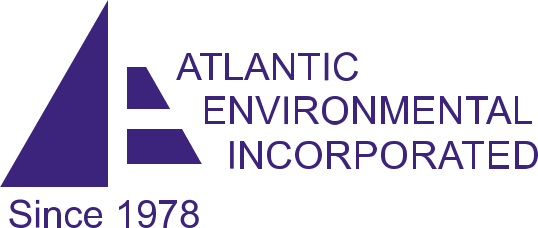If you need health hazards identification in the workplace as discussed in this article, call us at 973-366-4660 or email us at info@atlenv.com for details and a free estimate.
Written by Henry P. Shotwell, Ph.D., CIH, Vice-President, and Robert E. Sheriff, MS, CIH, CSP, President
March 28, 2020; Updated November 2021
Less Obvious Health Hazards in the Workplace
Workplace exposures to agents that can cause injury to employees are generally restricted to physical, chemical or biological sources. It’s not just the factory worker who is at risk; there are many hazards in each industry and facility and some of them may be less noticeable than others. For example, exposures can be presented by a variety of dust and fibers. Renovating an office can produce gypsum dust and paint solvents or can cause the release of asbestos fibers and hidden mold spores. A poorly-running ventilation system may allow build-up of carbon dioxide in office air, resulting in the 11 o’clock and 3 o’clock slump that many office workers experience. Even worse, it could result in Sick Building Syndrome, which is when multiple people are affected and this can even get to the extent that they must evacuate the building.
Some Examples – The Less Obvious
Sometimes, truck and automobile exhaust get pulled into a building’s ventilation system, causing odor complaints and relatively mild feelings of un-wellness. Brush fires involving poison ivy can cause very hard to identify cases of skin, eye and upper respiratory irritation. Blueprint machines and even ordinary office copiers can produce irritating emissions. Some janitorial products can also produce a rash and complaints.
Effects on Health, Safety, Productivity, Motivation
The common factor in all these scenarios is that the sources of employee discomfort, illness, and complaints are very hard to identify. Industrial Hygienists, who are trained to recognize these environmental factors, can sample, analyze, and evaluate the potential for harm that these factors may pose. Industrial Hygienists can also make recommendations for alleviating or eliminating the hazardous conditions. This may be as simple as taking measurements for temperature with direct reading instruments and finding the relative humidity, carbon monoxide levels, carbon dioxide levels, and VOC’s.
More complex situations may involve mold, bacteria, sewer gas, odors, chemicals, dust, fire residue, and construction dust. These situations would likely require testing that may need laboratory analysis of both air and surface samples.
For more information contact Atlantic Environmental.
Our primary service areas for Health Hazards in the Workplace Consulting are New Jersey NJ, New York NY, (New York City), Pennsylvania PA, Connecticut CT, Delaware DE, Massachusetts, (Boston) MA, Rhode Island RI, Washington DC, Wisconsin WI, Maryland MD, Michigan MI, Illinois (Chicago) IL, Virginia VA, Indiana IN, Georgia (Atlanta) GA, Alabama AL, North Carolina NC, South Carolina SC, Tennessee TN, Texas (Dallas, Ft Worth) TX, Oklahoma OK, DC, Arkansas AR, Florida FL. We can service most other areas of the U.S. but with some additional travel charges will be applied.



